Huawei doesn't need to continue showing that it can produce flagship phones that can compete with devices from other manufacturers. We've seen Huawei do it before with its Mate and P series phones, which have consistently pushed the frontiers of design, functionality, and mobile photography year after year. The Huawei P50 Pro is a continuation of this trend.
The difficulty – and you've probably heard this before – is on the software side. Since the United States barred Huawei from utilizing Google services, the company has been striving to create its own platform based on Android in order to entice app developers to publish their products on its own App Gallery.
Depending on where you reside, Huawei has made good progress in this area, with many popular regional applications and services now available in the App Gallery. Huawei has to win over the bigger developers: although key applications like Snapchat and TikTok are available in the App Gallery, others like Instagram and WhatsApp are not.
Leaving aside the software, Huawei has once again produced an excellent phone that can compete with flagships from any prominent manufacturer with the P50 Pro.
The P50 Pro's design is striking: it looks stunning, it's tiny and light, and it fits well in your palm. It has the appearance and feel of a high-end product.
The Qualcomm Snapdragon 888 CPU provides great performance, with programs starting swiftly and functioning smoothly. The 8GB of RAM on offer isn't a class-leading standard, but it's more than enough to keep the phone responsive. Storage options vary by location; our review model had 256GB, which is more than plenty for the average user. The phone does not, however, support 5G, which is another result of US regulations.
Photography is where the Huawei P50 Pro really excels, which isn't unexpected given that Huawei has long been at the forefront of mobile photography, particularly with its P series. The Huawei P50 Pro's primary camera is outstanding, capable of producing stunning images in every lighting scenario. However, we were a little disappointed with the ultrawide and telephoto cameras, which don't have the finest color fidelity when compared to the primary photographer.
The Huawei P50 Pro's battery capacity isn't the largest we've seen, but it's plenty for a day of moderate use. Huawei provides rapid 66W cable charging and nearly as fast 50W wireless charging, allowing you to swiftly top up as needed.
Overall, the Huawei P50 Pro offers everything you'd expect from a flagship phone in 2022, and Huawei's efforts in putting apps on its platform are noteworthy. However, whose applications you use on a daily basis, and especially how much you rely on Google services such as Gmail, Google Photos, Maps, and YouTube, will ultimately determine whether or not the P50 Pro is a phone worth considering.
Huawei P50 Pro: Price
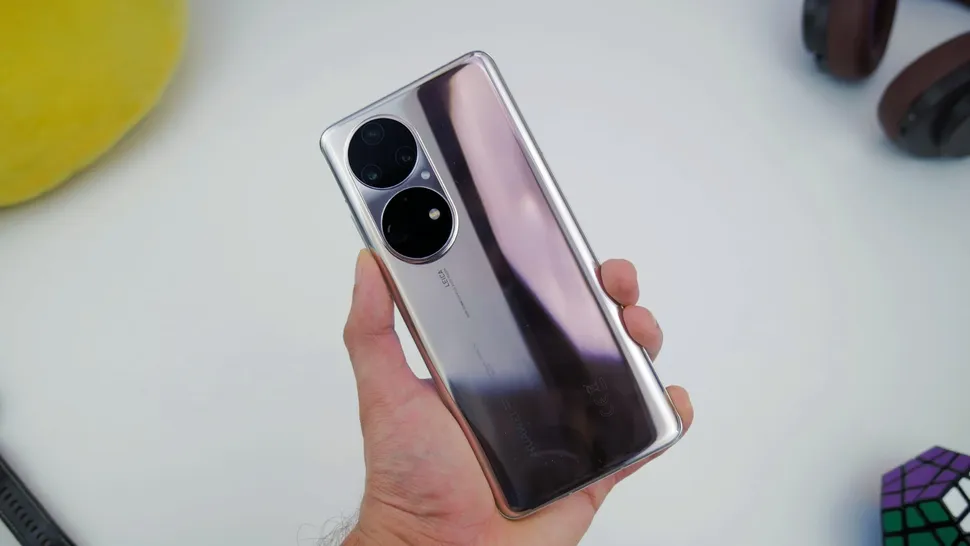
(Image credit: Future)
The Huawei P50 was unveiled last year in China and is now being distributed globally. The phone is presently available in the UAE and Saudi Arabia, and we anticipate that it will be accessible in the UK and Europe in the near future, though Huawei has yet to announce launch dates.
Huawei typically does not sell its phones in the United States or Australia, so don't expect to be able to purchase them there.
In the UAE, the Huawei P50 Pro is available in a single configuration – 8GB of RAM and 256GB of storage – for AED3,999. At least in terms of capacity, the Huawei P50 Pro outperforms the iPhone 13 Pro and the Samsung Galaxy S21 Ultra.
The Huawei P50 Pro was first launched in four different colors, with availability changing by location. The P50 Pro will be available in the UAE and Saudi Arabia in Golden Black and Cocoa Gold.
Huawei P50 Pro: Design and Display
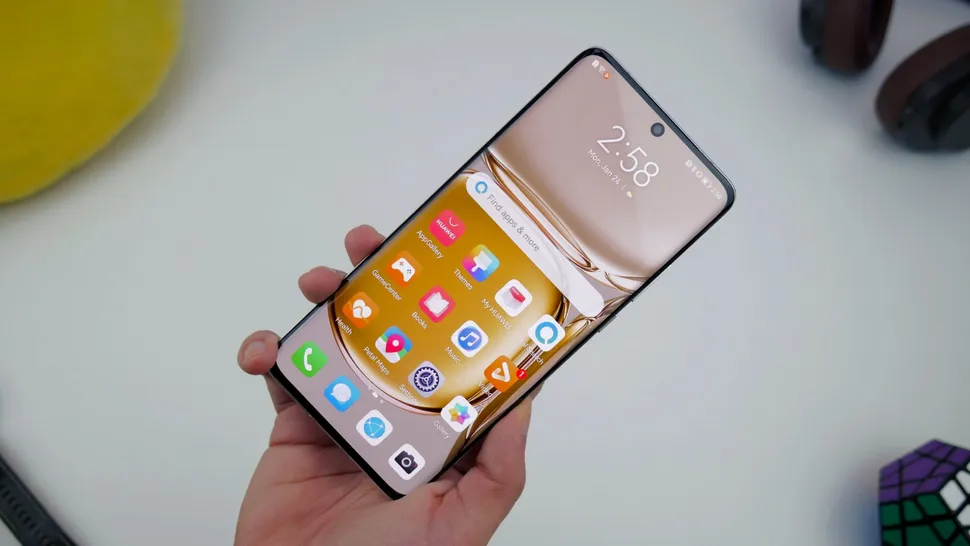
(Image credit: Future)
Huawei is no stranger to creating attractive and premium-feeling phones, and the P50 Pro is no exception. It is sleek and beautiful, and it fits well in the hand. The P50 Pro is neither too huge nor too heavy, measuring 158.8 x 72.8mm and weighing 195g.
The volume and power buttons are on the right side, as they are on most Huawei flagship phones in recent years, while the USB Type-C connector and SIM tray are on the bottom.
The top and bottom speakers are situated, while the fingerprint sensor is located behind the screen, which features curved edges that wrap into the metallic frame.
The Huawei P50 Pro is available in four colors: Golden Black, Pearl White, Charm Pink, and Cocoa Gold, however, your availability may vary depending on where you reside. We tested the Cocoa Gold model, which is shown in the images throughout this article.
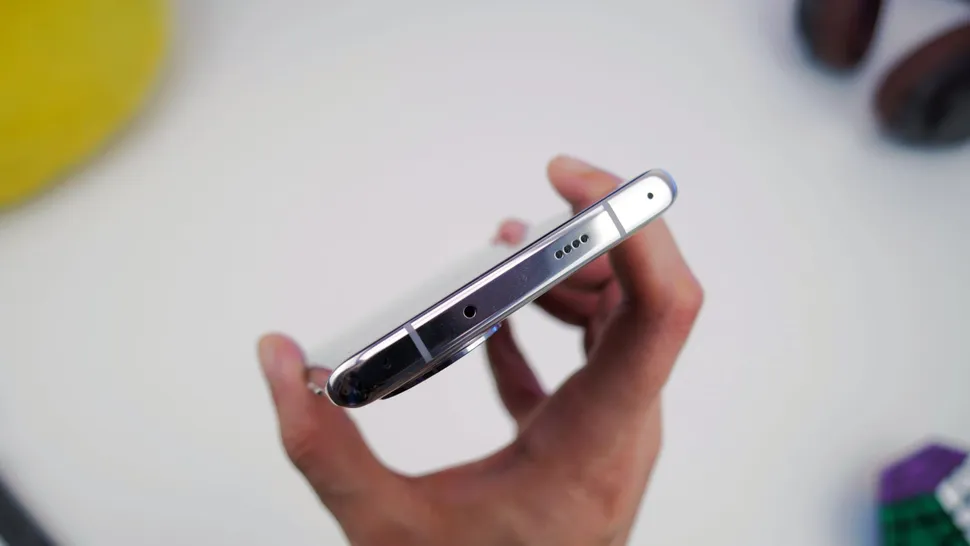
(Image credit: Future)
The phone's backside has a polished metallic surface with a slight gold tint. It appears sleek, yet it attracts fingerprints. The phone's rear also houses two very large camera ring modules placed behind a pill bump that doesn't stand out as much as those on some of the most recent flagship phones we've seen.
Nonetheless, the 'dual matrix camera,' as Huawei refers to it, stands out and likely generates a range of feelings, from terrifying to interesting.
The Huawei P50 Pro has a 6.6-inch screen with a resolution of 1228 x 2700 and a pixel density of 450ppi. In contrast, the Samsung S21 Ultra has a resolution of 1440 x 3200 (515ppi) while the iPhone 13 Pro Max has a resolution of 1284 x 2778 (458ppi). Don't get too caught up in the statistics, though; all of these phones feature extremely high-resolution, sharp-looking displays.
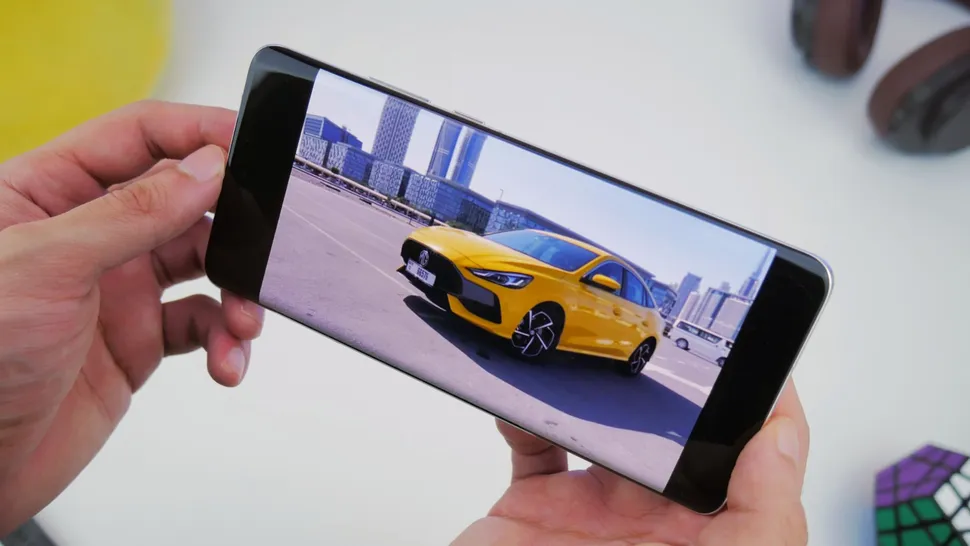
(Image credit: Future)
The color reproduction is superb, and the OLED screen is ideal for watching movies and videos. Huawei has also upped the refresh rate to 120Hz, up from 90Hz on the P40 Pro, making navigating the UI and scrolling through applications extremely fluid. To preserve battery life, you may set the refresh rate to Dynamic, which adjusts the refresh rate based on what you're doing on your phone, but setting it to High will give you the smoothest overall experience.
Read Article Best Samsung Galaxy Smartphones to Buy in 2022
Huawei P50 Pro: Spec and Performance
The Huawei P50 Pro is powered by the Qualcomm Snapdragon 888 processor seen in the majority of last year's top phones, with one exception: it only has an LTE/4G connection.
On our review model, the processor is paired with 8GB of RAM and 256GB of storage, which should be enough for most users, but 128GB and 512GB versions are available in other areas, with the latter also getting a RAM jumps to 12GB.
You may also extend the storage capacity with Huawei’s Nano Memory (NM) card. While not as common as microSD cards, NM cards have the same shape and size as a Nano SIM card, making it simple to utilize a secondary SIM or a Nano Memory card in Huawei phones' SIM tray.
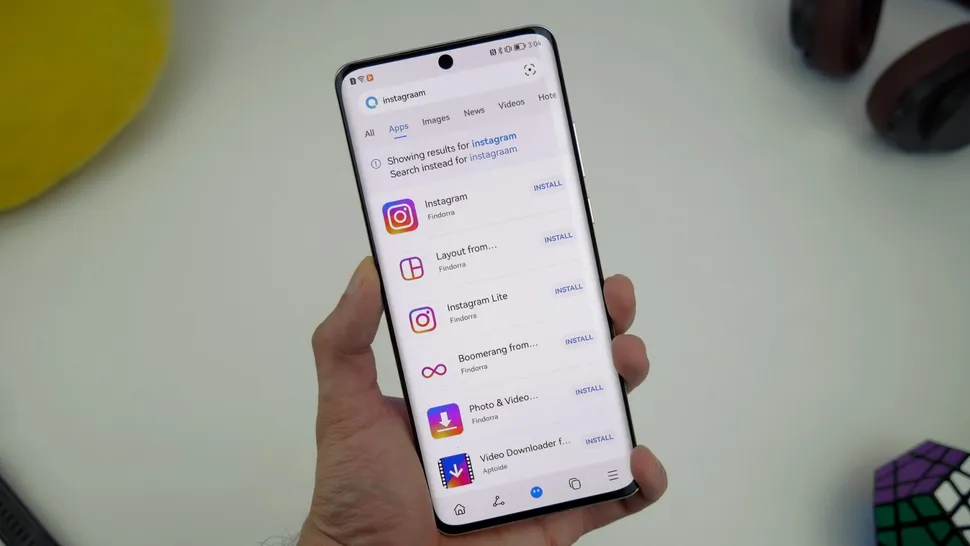
(Image credit: Future)
The Huawei P50 Pro, like all other flagship phones, proved to be exceptionally fluid and quick in everyday usage. The phone scored 3018 in Geekbench 5, which is comparable to other Snapdragon 888-based phones.
As for the absence of 5G, as previously said, this is due to Huawei's limits, and how crucial 5G is something you'll have to consider. We performed a 4G speed test and obtained a download speed of 292 Mbps on the Huawei P50 Pro.
In comparison, the download speed of the iPhone 13 Pro Max in 5G mode was 586Mbps. So the iPhone has double the speed and will undoubtedly download things faster, but to put things in context, a 4K film requires just 25Mbps to stream.
Huawei has also grown extremely adept at enabling communication inside its own ecosystem – so if you have a Huawei laptop or tablet, or a MateView display, these devices can easily connect with your Huawei phone, as well as with each other, and can share data effortlessly.
Huawei P50 Pro: Camera
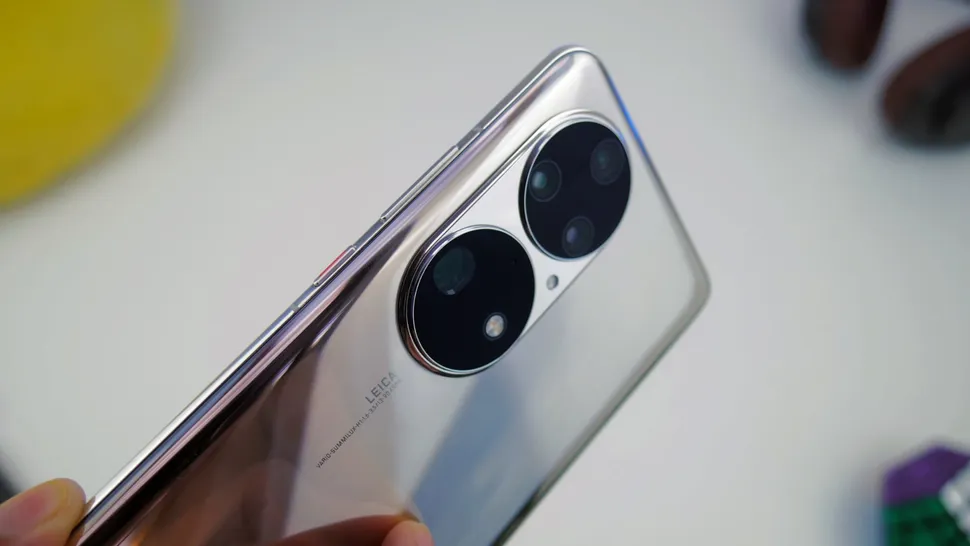
(Image credit: Future)
The Huawei P50 Pro has an imposing pill-shaped camera bump that houses four AI-powered Leica cameras. A 50MP sensor powers the primary wide camera, which is paired with a 64MP periscope telephoto lens capable of 3.5x optical zoom, a 13MP ultra-wide lens, and a 40MP monochrome sensor.
Given this configuration, it's no wonder that the P50 Pro produces excellent photographs. We were rarely disappointed with the cameras, particularly during the day. The images were crisp, detailed, and had a wide dynamic range.
Huawei smartphones have previously been known to enhance colors in order to make photographs appear more lively and enticing. However, the picture processing of the P50 Pro is such that colors, particularly those crucial skin tones, appear more true to life. Furthermore, the dedicated AI mode has been refined to make more subtle and focused modifications to images rather than just increasing vibrancy.

(Image credit: Future)
The P50 Pro camera configuration provides a plethora of shooting possibilities. The ability to capture an ultra-wide picture of a situation is always beneficial, as is the specialized macro mode for close-up shots. However, Huawei still has to focus on color management throughout various settings. For example, a photograph shot with the primary wide lens would appear warmer than a one taken with the ultra-wide lens. Given that this is a flagship experience, such hue fluctuations are a little disappointing.

(Image credit: Future)
This is particularly visible when moving from the primary wide lens to the periscope telephoto lens, which has a 3.5x optical zoom and an astounding degree of detail. With the P50 Pro, you can zoom up to 100x, and for the most part, photographs up to 30-50x zoom are useable, with the remainder of the zoom range being a novelty element. The specialized monochrome sensor is a similar story. For inexperienced photographers, this appears to be as simple as putting a B/W filter to any ordinary shot, and for the most part, it is. Photographers, on the other hand, may find this function more appealing.
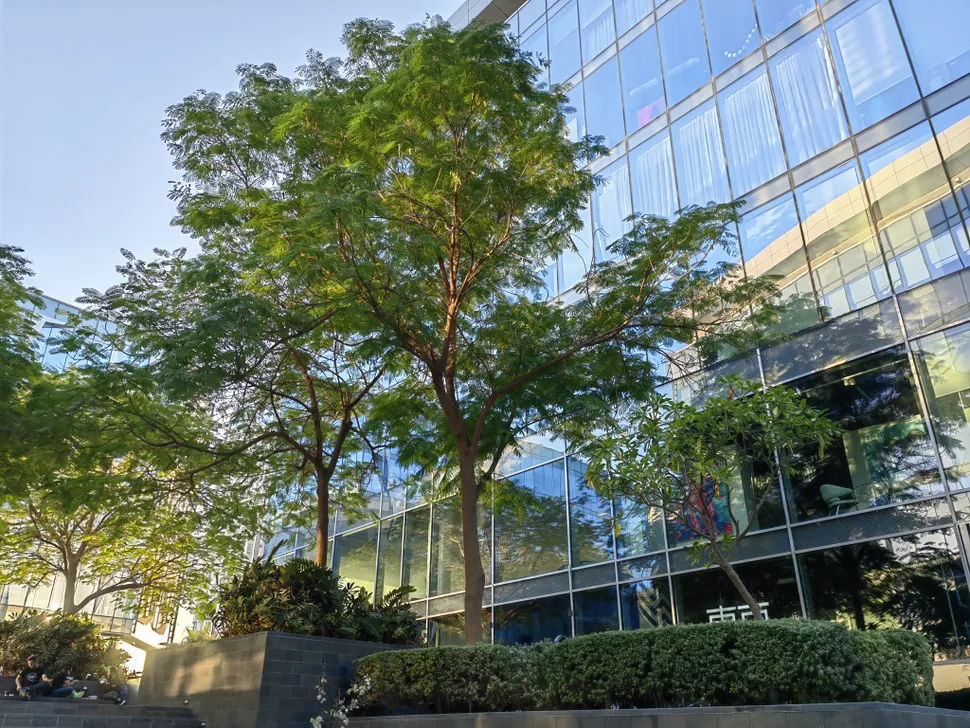
(Image credit: Future)
Even while daytime shooting with the P50 Pro is excellent, there are a few drawbacks. For starters, the camera's shutter speed is on the sluggish side, and we frequently found ourselves waiting a fraction of a second before a snap was captured. Most of the time, this won't be a problem, but if you're attempting to catch a brief moment, you could miss the image.
Second, the camera's viewfinder does not adequately show what a photograph will seem like once it is recorded. When we were photographing the sky, the viewfinder displayed shots that were overexposed and blown out. However, after the photo is taken, the smartphone's processing kicks in to generate a properly exposed image. This isn't a complaint of the image quality; it's simply something we'd want to point up as part of the user experience.
Huawei has always been at the forefront of low-light photography. However, while the P50 Pro's low-light photos are great, they aren't as crisp as we've seen from other competitors recently. Certain low-light photographs, particularly those of buildings, frequently have a subtle softness to them.

(Image credit: Future)
And, strangely, setting night mode made matters worse, since the longer exposure injected blur into images, despite the fact that the night mode timer was usually only one second. We also observed several issues in which the timer remained on for 10-12 seconds, resulting in a fuzzy jumble of a shot. We're hoping that these are glitches that can be fixed with software upgrades.
The ultra-wide camera's low-light performance is quite disappointing. Modern flagship cameras have a system in which the main and ultra-wide lenses are of comparable quality. However, in the case of the P50 Pro, the lower-resolution sensor, along with the previously stated color discrepancies, results in a less-than-ideal low-light experience. Even when using the ultra-wide lens for a zoomed-out view of 0.8x or 0.9x, the quality reduction is fairly evident. To some extent, you may compensate by utilizing night mode; unfortunately, this results in purple fringing in the finished image.
In terms of video capture, the P50 Pro can record up to 4K footage at 60 frames per second. The primary wide lens and the periscope telephoto lens both offer optical image stabilization (OIS), while the ultra-wide lens does not. Furthermore, the ultra-wide lens is limited to 4K 30fps. The video experience with the P50 Pro camera is decent if you move smoothly and don't swap lenses mid-recording. However, when using numerous lenses, the transitions are abrupt and harsh.
The P50 Pro has a single 13MP selfie camera on the front. Its quality is acceptable for most circumstances and social media posting, owing to its larger field of vision. In low light, you can also use night mode, however, photographs come out a touch softer than we'd prefer. The selfie camera, like the primary camera, has a variety of portrait mode choices; however, although they work well for edge detection for background blur effects, the camera has a propensity to over-beautify your face, even when beauty mode is turned off.

(Image credit: Future)
Huawei P50 Pro: Software
As with other recent Huawei phones, the P50 Pro runs Android but lacks Google services owing to US government limitations. Interestingly, Huawei has opted to launch the P50 Pro in foreign countries with EMUI, which is more of skin over Android 10, rather than HarmonyOS, which is a fork on Android that is used in China.
The lack of Google services and the Play Store is something customers will have to deal with, and depending on where you reside and how heavily you rely on Google services, it may be anything from minor irritation to a cause to avoid this phone entirely.
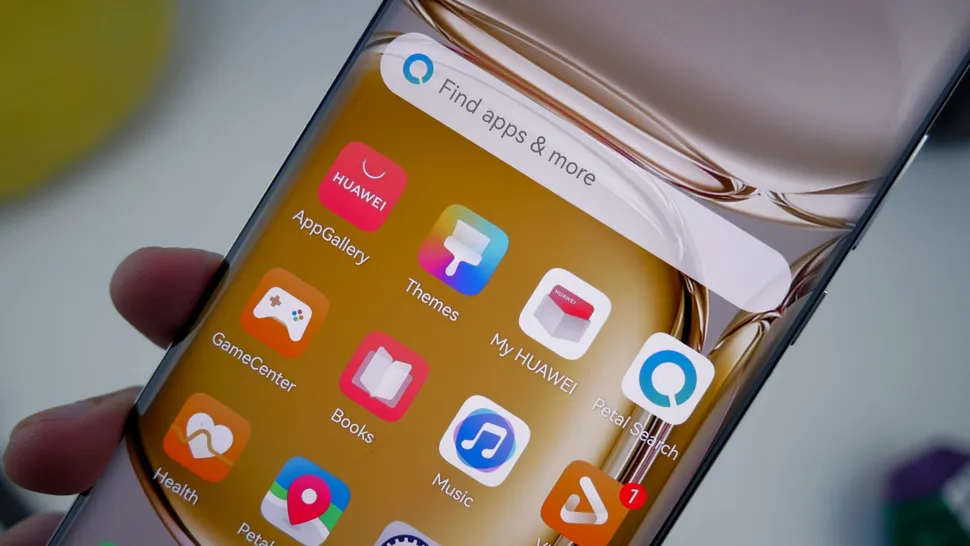
(Image credit: Future)
Huawei has made a concerted effort to entice app developers to migrate their programs to App Gallery, Huawei's counterpart of the Play Store, although your mileage may vary depending on your location. Many of the most popular applications in the Middle East, ranging from banking to food delivery and utility services, are accessible on App Gallery. However, compatibility for some of the more popular apps, such as Instagram and WhatsApp, is still lacking. While there are methods around this by sideloading such programs – and Huawei makes this simple — getting Google apps onto your Huawei phone appears to be difficult.
If you rely on Gmail, Google Photos, or YouTube, for example, your only alternative is to use a web browser, which isn't the best experience. It's a frustrating scenario that is out of Huawei's hands, which is a shame because the phone's UI looks excellent and is easy to use.
Huawei's EMUI 12, which is based on Android 10, features a gorgeous user interface. The icons have been redone, and the typefaces are attractive. Interface improvements like huge folders on the home screen or widget access by long-pressing an app icon improve usability.
Huawei P50 Pro: Battery life
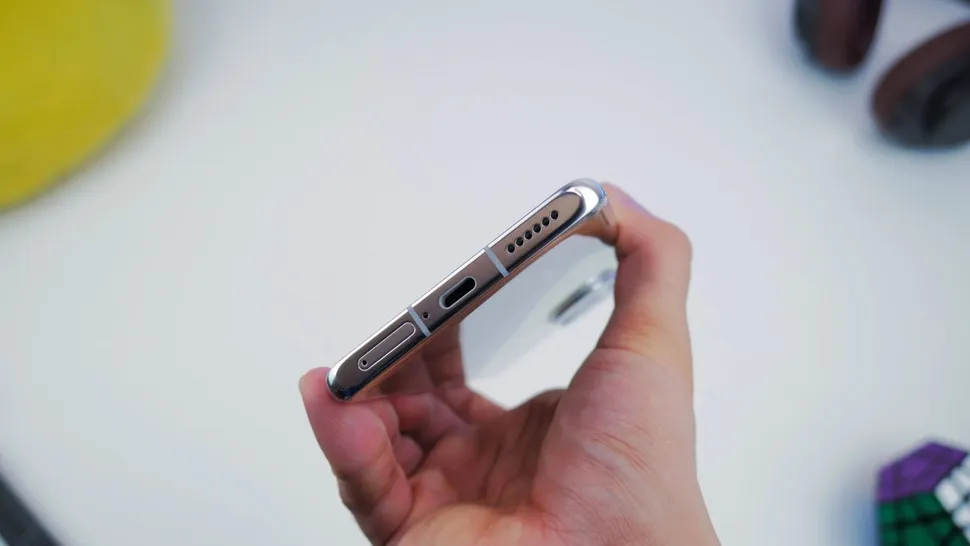
(Image credit: Future)
The P50 Pro is powered by a 4,360mAh battery, which is quite tiny given the phone's 8.5mm thickness. Despite the fact that the phone does not enable 5G, the battery capacity and endurance are sufficient for a full day of moderate use.
This equates to around 6-7 hours of screen-on time before you need to charge your phone. If you're a heavy user who is continuously online, using GPS and taking photographs and videos, your screen-on time may go below six hours, necessitating a recharge before the end of the day.
Fortunately, Huawei includes a suite of built-in charging functions, so you should be able to avoid battery-life difficulties. For starters, its 66W charging speed through the provided brick allows you to charge from 0 to 70% in roughly 30 minutes, with a full charge attainable in a little under an hour.
More impressively, with the optional proprietary charger, the P50 Pro enables 50W wireless charging. If you're used to charging your smartphone on a wireless pad while working, you're unlikely to run out of battery power at critical times. Unfortunately, the flagship lacks functionality for reverse wireless charging, which is odd given that we've seen it on other Huawei phones.



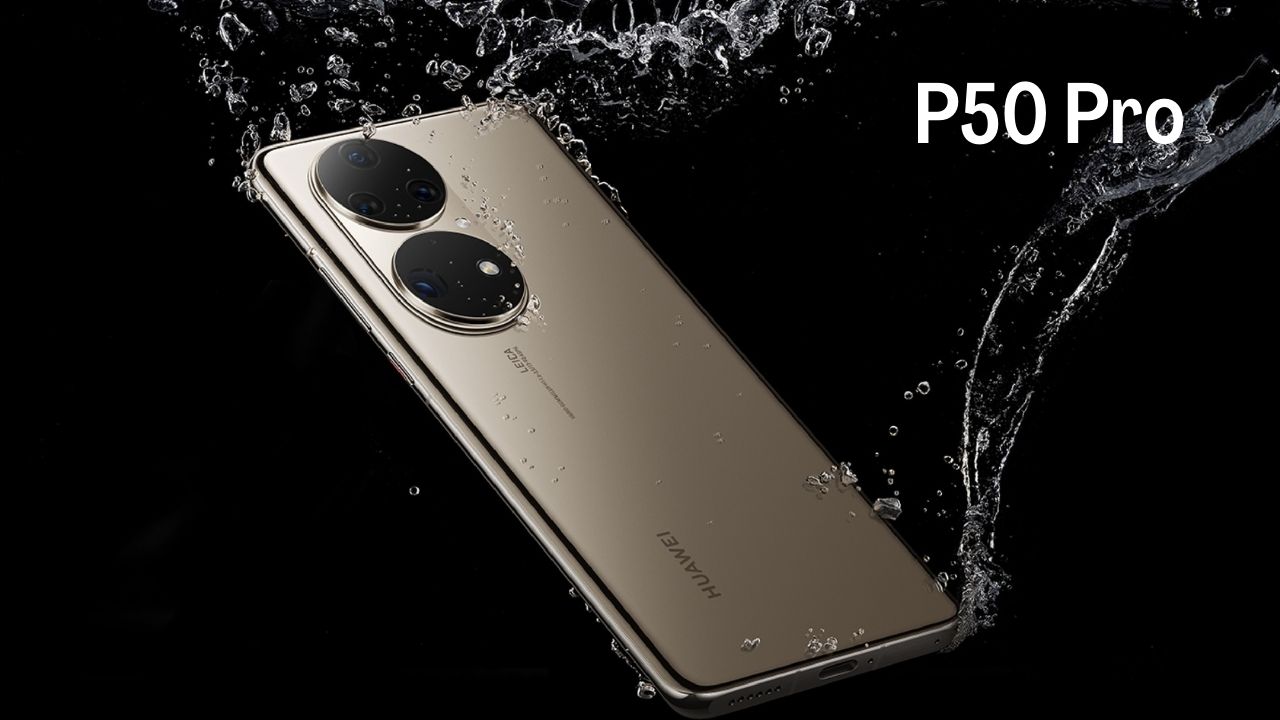
Comments (0)